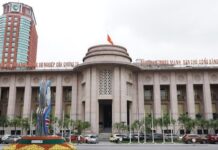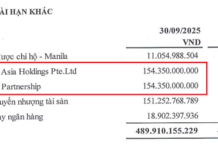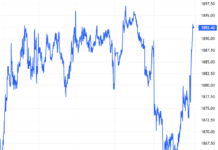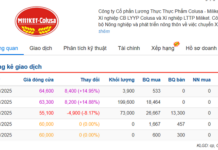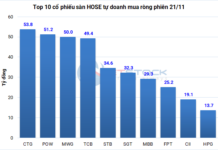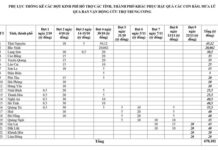For workers, the most evident sign is the rapid rise in living costs, from family meals and workers’ rations to the prices of food, vegetables, and meat, which are increasing daily. Behind this is not just the seasonal story of “rainy season vegetable price hikes,” but a complex interplay of pressures: natural disasters, rising input costs, exchange rate fluctuations, adjustments in fuel, electricity, and public service prices, minimum wage increases, and upcoming tax policy changes.
From an economic perspective, Vietnam is entering a phase of cost-push inflation, the most challenging type to control. It cannot be addressed solely through monetary measures like credit tightening or interest rate hikes. Over-tightening could weaken growth while prices remain under supply-side pressure. Without careful management, year-end inflation may exceed targets, erode real incomes, and further burden millions of workers.
To ensure price stability and social welfare, a comprehensive, robust, and synchronized solution package is essential.

Rising food prices significantly impact citizens’ livelihoods. Photo: QUỲNH TRÂM
First, for agricultural and food products, the government must collaborate closely with localities to swiftly restore production post-disaster, reorganize cultivation areas, and supply chains. Locally scarce goods should be flexibly imported to boost supply, cool markets, and prevent hoarding and price gouging. Price stabilization systems in major cities must enhance their regulatory role during peak periods like Tet.
Second, exchange rate management must be flexible yet goal-oriented. When businesses and citizens trust that rates won’t fluctuate drastically, foreign currency hoarding decreases. This is critical because any expectation of VND devaluation can trigger “defensive” price hikes across multiple sectors. Simultaneously, businesses should be encouraged to use hedging tools or renegotiate long-term import contracts to share cost volatility.
Third, for state-managed goods like fuel and electricity, pricing strategies should be predictable, avoiding abrupt adjustments. When increases are necessary, transparent explanations of causes, timelines, and impacts are crucial, alongside tax and fee tools to ease pressure during sensitive periods. Proactive, visionary management stabilizes market expectations.
Fourth, reducing non-production costs for businesses is vital. Many current expenses stem not from materials but from bureaucratic red tape, specialized inspection fees, logistics costs, and unnecessary intermediaries. Cutting these costs would reduce upward price pressures.
Finally, managing inflation expectations through transparent communication is key. When citizens understand price hike causes and see consistent government solutions, panic buying, hoarding, and rumor-driven price increases diminish. Conversely, insufficient information can inflate expectations, even without corresponding cost increases.
Controlling 2025 year-end inflation is thus not merely a technical challenge for macroeconomic managers but a task directly tied to meals, electricity bills, fuel costs, and Tet shopping for millions of families. Keeping inflation in check safeguards citizens’ livelihoods and lays a stable foundation for 2026 and beyond.
Flexible and Transparent Price Management Framework for Government Operations
This revised draft of the Price Law not only addresses the shortcomings of the current legal framework and institutionalizes the Party and State’s directives on the two-tier local government structure with enhanced decentralization, but also lays the groundwork for the State to manage prices flexibly, transparently, and in alignment with market principles.
Revising the Price Law to Align with Two-Tier Local Governments and Price Management Practices
On the morning of November 3rd, as part of the 10th session agenda, the National Assembly will review the Presentation and Verification Report on the draft Law amending and supplementing certain articles of the Price Law.
Why Do Property Prices Keep Rising? Exploring Effective Solutions to Curb the Trend
In recent years, the relentless surge in real estate prices, particularly in housing and condominiums, has far outpaced the average income of the majority of workers. Despite numerous aggressive and continuous solutions being implemented, the challenge of stabilizing property prices remains a complex puzzle yet to be solved.






